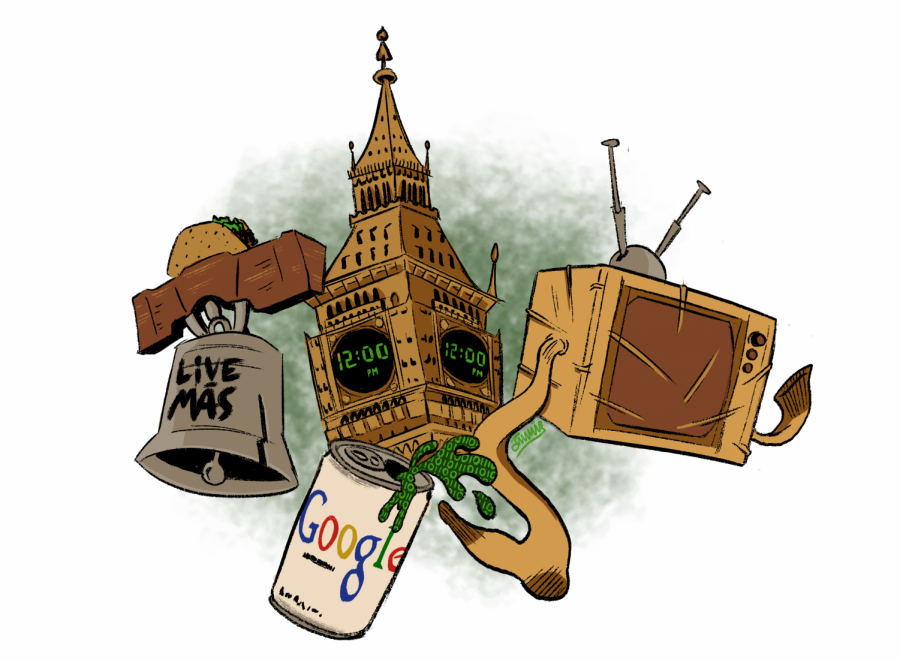Jain: Where did April Fools’ come from?
April 2, 2021
Many of you likely have family or friends who enjoyed the humorous misery of others on yesterday’s April Fools’ Day. You, yourself, may have even been the deceptive prankster or the unfortunate prankee. As a prankster, you may have conducted the classic salt and sugar switch leaving your prankee having a bitter dessert or an uncharacteristically sweet entree. Most holidays, I simply follow the communal festivities without any idea of the origins and significance of the special occasion. This year, however, out of genuine curiosity, I reviewed the history of April Fools’ Day, and will share the origin of this infamous holiday and some of the most cunningly outrageous pranks performed throughout time.
The precise origin of April Fools’ is a divisive topic linked to many individual events. However, many historians theorize the holiday dates back to the late 16th century when France switched from the Julian calendar to the modern Gregorian calendar.
In the Julian calendar, New Year’s Day fell on the Spring Equinox—around April 1—but in the Gregorian calendar, New Year’s Day was designated as January 1. The people who were slow in receiving the news, or who failed to realize that New Year’s Day had moved to another date, continued to celebrate New Year’s at the end of March to the first of April. These unknowing people became the target of jokes and were called “April Fools.”
On another note, April Fools’ is also closely tied to an ancient Roman festival called Hilaria (Latin for joyful) which was celebrated at the end of March and was inspired by the Egyptian legend of Isis, Osiris and Seth. On this day, participants dressed up in disguises and mocked fellow citizens and law enforcers.
Also, since April Fools’ Day is near the first day of spring, it appoints the time when mother nature fools the people with the sudden change in the weather.
But regardless of its origin, April Fools’ remains a holiday abundant with frightening unpredictability and meticulously crafted jokes. This is a time that allows people’s imaginations to run wild and have them act upon their eccentric fantasies. Among the numerous hoaxes enacted through the centuries, some were notably ingenious and duped a great number of people.
I’ve included some of the most outrageous pranks throughout history below. From these April Fools’ jokes, one thing is for sure: Humans love a good laugh. And nothing is more amusing than successfully tricking others and observing their unpredictable reactions. But, especially for those stressed-out college students, I think April Fools’ Day is a needed reminder to enjoy life, to have a few laughs and to not take life too seriously.
Pasta Grows on Trees
This prank was performed on April 1, 1957, and is by far the most notorious and indelible of pranks. In the popular British news show, Panorama, they broadcasted a three-minute segment about a bountiful spaghetti harvest in a southern Swiss town called Ticino. The segment claimed that it was a prodigious year for spaghetti crops because of the milder winters and the disappearance of the “Spaghetti weevil.” The segment panned to swiss peasants picking delicate strands of spaghetti from an enormous tree and placing it in a woven basket. The freshly picked spaghetti was then prepared in the classic Italian dish. This seemingly absurd story generated an astounding response at the time, with many calling the BBC wanting to know how to grow their own spaghetti tree.
Redefining pi
If you took high school geometry, you may have encountered the iconic and irrational number, pi. Pi was a notoriously infinite number that was hard to work with and thus, in 1998, Mark Boslough disseminated the alleged news that lawmakers in Alabama decided to pass a law that redefined pi to simply be equal to 3. This intriguing news was widely known and believed by the public.
Taco Liberty Bell
On April 1, 1996, a full-page ad appeared in six major American newspapers (The Philadelphia Inquirer, New York Times, Washington Post, Chicago Tribune, Dallas Morning News and USA Today) about Taco Bell purchasing America’s greatest treasure, the Liberty Bell, to help reduce the country’s debt. The bell would then be renamed the Taco Liberty Bell. This alarming news generated a huge uproar after which many worried citizens called Taco Bell’s headquarters and the National Park Service in Philadelphia to find out if the bell was actually sold. To assuage the uproar, the Philadelphia branch of the National Park Service convened to assure the public that the bell had not been sold.
Big Ben goes digital
The BBC reported in 2015 that Big Ben would be changed to a digital readout where the hands on the dial would be switched for the digital numerical representation. This April Fools’ hoax backfired on the BBC as few people thought it was funny and many were rather angry and shocked to hear about the (fictitious) renovation of the precious monument.
Instant Color TV
Sweden’s most notable April Fools’ joke occurred in 1962. During this era, all TVs broadcasted black and white imagery and the only channel available in Sweden was SVT (Sveriges Television). On April Fool’s day, the channel’s technical expert, Kjell Stensson described a way to instantly see colored images from the black and white TV sets. Stensson claimed that wrapping the TV screen with a fine mesh screen, achievable with nylon stockings, would bend the light in a way that enabled images to seem colored. By referencing technical ideas, like the prismatic nature of light and the “double-slit interference,” he was able to formulate a plausible argument that left Swedish people scrambling their house for nylon stockings.
Goodbye, Space needle
In 1989, a Seattle comedy show went on the air and said the city’s space needle had fallen. It even had believable and realistic imagery to substantiate their claim. This news was of course a fabrication, which was little comfort to the 700 panicked callers who were alarmed by the story.
Google Gulp
Like their various doodles, Google is iconic for composing peculiar and outrageous April Fool hoaxes. They are so infamous for their April Fools’ jokes, that their announcement of Gmail was initially believed to be just another one of their jokes. But one particularly outlandish April Fool’s joke they devised was the Google Gulp. In 2005, Google announced that they would be rolling out a “smart drink” called Google Gulp. This beverage was touted to invigorate and sharpen the cerebral cortex through electrolytic neurotransmitter smart-drug stimulants. These stimulants claimed to increase one’s web-browsing efficiency and were available in laughably-named flavors like Beta-Carroty and Glutamate Grape.
Don’t Drink and Surf
In this April Fools’ Joke, an article in PC Computing Magazine described a bill going through Congress that would make it illegal to browse the internet while drunk. The FBI would use the bill to tap the phone lines of anyone who was abusing alcohol. To some readers, the dishonesty of this article might have been deceptively obvious as the bill was numbered 040194 (aka 04/01/94) and the contact person was named Lirpa Sloof (April Fools’ spelled backward). But this article still fooled many people and elicited so many numerous angry phone calls to Congress that one senator released an official denial of the rumor that he was a sponsor of the bill.



